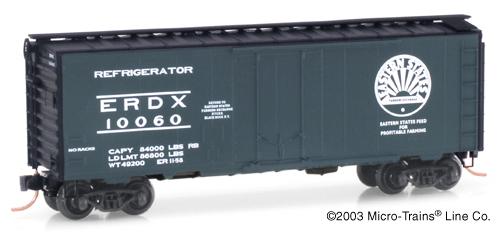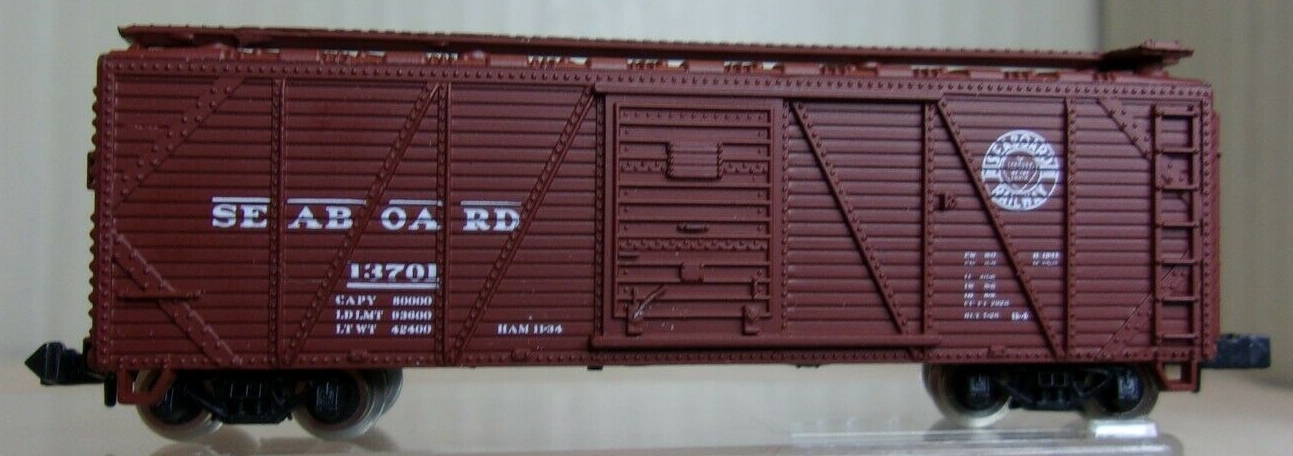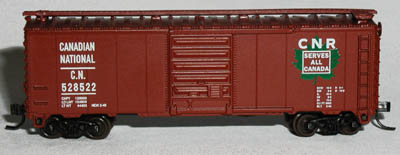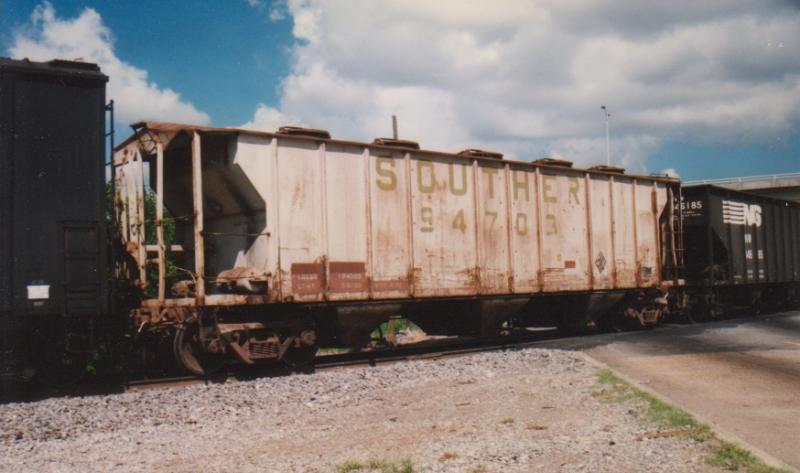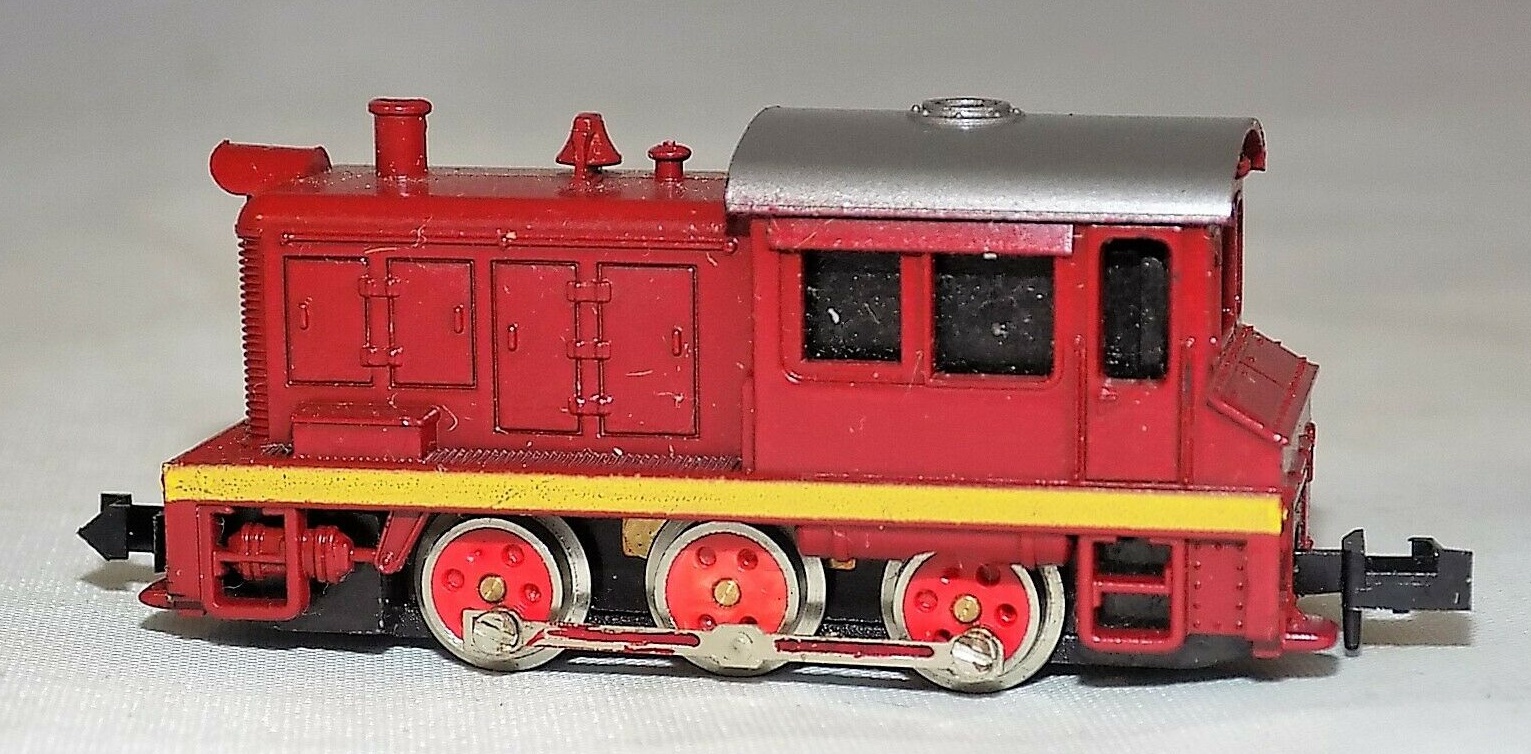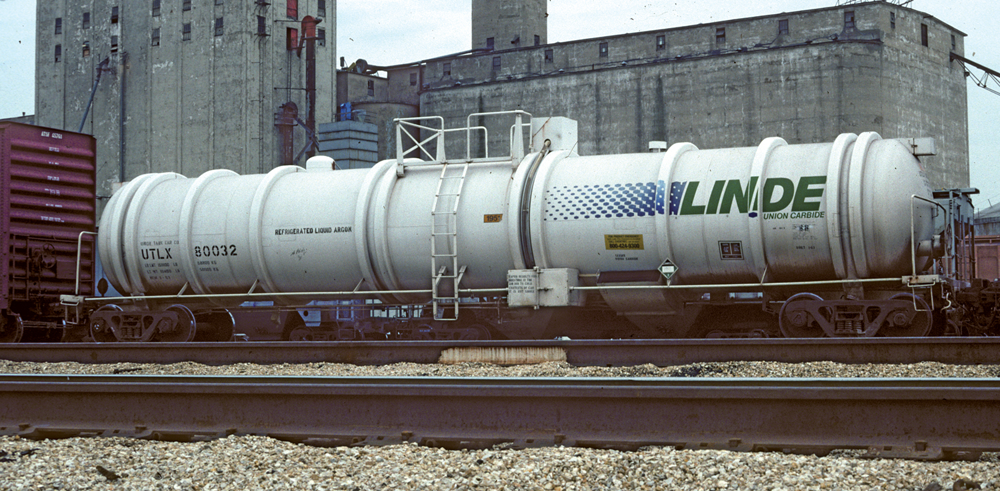Model Information: Broadway Limited announced this model in November of 2018.
Features:
Features:
- Precision Paint, Color, and Lettering Schemes
- Many Separately Applied Details including Hand Rails, ladders, brake wheel, roof walkway
- Beautifully Detailed and Accurately Modeled
- Precision Paint, Color, and Lettering Schemes
- Composition: ABS
- Couplers: (2) Operating MicroTrains Compatible
- Compatible Tracks: Code 55, 70 and 80 Rail
- Minimum Operating Radius: 9.75 in
Prototype History: High Capacity Railroad Tank Cars for Cryogenic Fluids, or Cryogenic Tank Cars for short, are used for the transportation of super-cold fluids such as liquid oxygen, nitrogen and argon. These tank cars solved the problem of maintaining extremely low temperatures while transporting large quantities of these materials over long distances.
These high capacity tank cars could transport more than 15,000 gallons of liquid oxygen--which is about double what any of its predecessors could do.
Cryogenic Tank Car Designations: DOT 113; AAR 204 and 204XT.
Cryogenic railroad tank cars are usually constructed of nickel or stainless steel as a tank within a tank. Because cryogenic liquids are very cold, insulation is placed between the two tanks and a vacuum pulled on the space to maintain the temperature. This process will allow the tank car a 30-day holding time.
Cryogenic cars transport various gases, including flammable hydrogen, liquid oxygen and poisons. Some cryogenic gases, such as nitrogen and argon, are considered inert. Temperatures of these liquefied gases can range from the warmest, carbon dioxide at –130°F, liquid oxygen at -297°F, liquid argon at -302°F, liquid nitrogen at -320°F, to the coldest, helium at –452°F. Thermal hazards of these materials are significant.
In addition to thermal hazards, cryogenic liquids have a large liquid-to-vapor expansion ratio. A small leak from a valve or container can create a large vapor cloud. Some ratios are as great as 900 to 1, meaning one gallon of cryogenic liquid can produce over 900 gallons of gas.
From Broadway Limited International and Firehouse
These high capacity tank cars could transport more than 15,000 gallons of liquid oxygen--which is about double what any of its predecessors could do.
Cryogenic Tank Car Designations: DOT 113; AAR 204 and 204XT.
Cryogenic railroad tank cars are usually constructed of nickel or stainless steel as a tank within a tank. Because cryogenic liquids are very cold, insulation is placed between the two tanks and a vacuum pulled on the space to maintain the temperature. This process will allow the tank car a 30-day holding time.
Cryogenic cars transport various gases, including flammable hydrogen, liquid oxygen and poisons. Some cryogenic gases, such as nitrogen and argon, are considered inert. Temperatures of these liquefied gases can range from the warmest, carbon dioxide at –130°F, liquid oxygen at -297°F, liquid argon at -302°F, liquid nitrogen at -320°F, to the coldest, helium at –452°F. Thermal hazards of these materials are significant.
In addition to thermal hazards, cryogenic liquids have a large liquid-to-vapor expansion ratio. A small leak from a valve or container can create a large vapor cloud. Some ratios are as great as 900 to 1, meaning one gallon of cryogenic liquid can produce over 900 gallons of gas.
From Broadway Limited International and Firehouse
Road Name History: 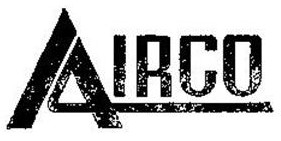 On November 16, 1916, the Air Reduction Company was officially chartered from American Oxygen and Air Liquide, and began producing and marketing high-purity oxygen.
On November 16, 1916, the Air Reduction Company was officially chartered from American Oxygen and Air Liquide, and began producing and marketing high-purity oxygen.
In 1908, after years of research and discussion, Percy Rockefeller - nephew of John D Rockefeller - and Air Liquide investors formed the American Oxygen Company. In 1914, Air Liquide (the company formed in 1902 to manufacture high-purity oxygen from air) began talks with American Oxygen Company to use its liquefaction process for the production of oxygen in America. American Oxygen bought liquefaction, distillation and oxygen compression equipment from Air Liquide and built its first plant in Philadelphia in 1915. Production sold out in two months. The success of the Philadelphia plant convinced the investors to build five additional oxygen plants in major industrial cities, Brooklyn, Newark, Pittsburgh, St Louis and Chicago, with Air Liquide providing the equipment.
This company, later to become Airco, was acquired in 1978 by British Oxygen Company (BOC) through an hostile takeover. It then became Airco Industrial Gases, a division of the BOC Group. The BOC Group plc was the official name of the multinational industrial gas and British based company more commonly known as BOC, and now a part of the Linde Group. An important part of BOC's history was the acquisition of Airco Industrial Gases, an American competitor. After 11 years of litigation, in 1978 Airco became a wholly owned subsidiary of BOC. The enlarged company changed its name to the BOC Group. In September 2004, BOC had over 30,000 employees on six continents, with sales of over £10.6 billion. BOC was a constituent of the FTSE 100 Index and the FT 30. On 5 September 2006 the BOC Group became part of the Linde Group of Germany and is no longer traded as a separate company.

In 1908, after years of research and discussion, Percy Rockefeller - nephew of John D Rockefeller - and Air Liquide investors formed the American Oxygen Company. In 1914, Air Liquide (the company formed in 1902 to manufacture high-purity oxygen from air) began talks with American Oxygen Company to use its liquefaction process for the production of oxygen in America. American Oxygen bought liquefaction, distillation and oxygen compression equipment from Air Liquide and built its first plant in Philadelphia in 1915. Production sold out in two months. The success of the Philadelphia plant convinced the investors to build five additional oxygen plants in major industrial cities, Brooklyn, Newark, Pittsburgh, St Louis and Chicago, with Air Liquide providing the equipment.
This company, later to become Airco, was acquired in 1978 by British Oxygen Company (BOC) through an hostile takeover. It then became Airco Industrial Gases, a division of the BOC Group. The BOC Group plc was the official name of the multinational industrial gas and British based company more commonly known as BOC, and now a part of the Linde Group. An important part of BOC's history was the acquisition of Airco Industrial Gases, an American competitor. After 11 years of litigation, in 1978 Airco became a wholly owned subsidiary of BOC. The enlarged company changed its name to the BOC Group. In September 2004, BOC had over 30,000 employees on six continents, with sales of over £10.6 billion. BOC was a constituent of the FTSE 100 Index and the FT 30. On 5 September 2006 the BOC Group became part of the Linde Group of Germany and is no longer traded as a separate company.
Brand/Importer Information:  Broadway Limited Imports, LLC defines itself as "the world's foremost producer of top-quality HO and N scale model trains".
Broadway Limited Imports, LLC defines itself as "the world's foremost producer of top-quality HO and N scale model trains".
The company was founded in 2002 and introduced its first N scale model in 2009.
Broadway Limited Imports is composed of a team of 15 fun loving individuals who are dedicated to creating the most realistic model railroading experience possible, with the best customer service possible.
The Broadway Limited Imports headquarters is located in Ormond Beach, Florida at 9 East Tower Circle. It's just under an hour's drive from Disney World.
About Broadway Limited Imports.

The company was founded in 2002 and introduced its first N scale model in 2009.
Broadway Limited Imports is composed of a team of 15 fun loving individuals who are dedicated to creating the most realistic model railroading experience possible, with the best customer service possible.
The Broadway Limited Imports headquarters is located in Ormond Beach, Florida at 9 East Tower Circle. It's just under an hour's drive from Disney World.
About Broadway Limited Imports.
Item created by: CNW400 on 2023-05-15 09:45:13. Last edited by CNW400 on 2023-05-15 09:45:14
If you see errors or missing data in this entry, please feel free to log in and edit it. Anyone with a Gmail account can log in instantly.
If you see errors or missing data in this entry, please feel free to log in and edit it. Anyone with a Gmail account can log in instantly.




